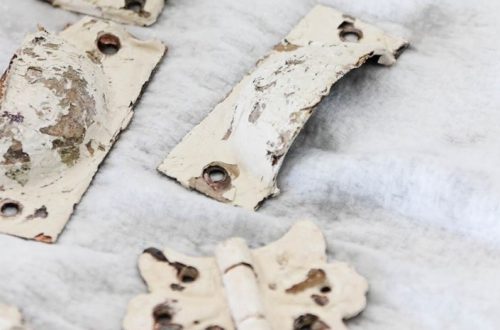The unassuming beaker, a ubiquitous piece of laboratory glassware, plays a vital role in countless chemical experiments. This seemingly simple container holds a rich history and a surprising range of functions within the realm of chemistry. This guide delves into the world of beakers, exploring their purpose, function, and the different types used by chemists.
Part 1: The Humble Beaker: A Workhorse in the Chemistry Lab

A Vessel for Many Uses: Holding, Mixing, and Heating
Beakers are the workhorses of the chemistry lab. These versatile containers are used for a variety of purposes, including:
- Holding Liquids and Solutions: The primary function of a beaker is to hold liquids and solutions. They are ideal for storing prepared solutions, collecting reaction products, or holding samples for analysis. Their open top allows for easy access to the contents.
- Mixing and Stirring: The wide opening of a beaker facilitates efficient mixing of solutions. Chemists can use stir rods or magnetic stirrers to combine different chemicals or dissolve solids into liquids within the beaker.
- Heating Liquids: Many beakers are made from heat-resistant materials like borosilicate glass, allowing them to be safely heated over a Bunsen burner or hot plate. This makes them suitable for heating solutions, conducting reactions that require specific temperatures, or evaporating liquids to dryness.
Part 2: Built for the Lab: The Design and Materials of Beakers
A Classic Shape for Optimal Functionality
The characteristic shape of a beaker – a cylindrical body with a flat bottom and a spout – is specifically designed for functionality in the lab. This design caters to the practical needs of scientists and researchers. The wide opening allows for easy access to the contents, making it convenient for experiments involving mixing, stirring, or adding substances. Additionally, the flat bottom ensures stability when placed on a lab bench, reducing the risk of accidental spills or tipping. The spout, a notable feature of the beaker, serves to facilitate controlled pouring of liquids, enabling precise measurements and minimizing wastage. The combination of these design elements makes the beaker an essential and versatile tool in various laboratory settings, providing a reliable and user-friendly vessel for carrying out a wide range of scientific experiments and processes.

Material Matters: Durability and Heat Resistance
The most common material for beakers is borosilicate glass. This type of glass offers several advantages:
- Chemical Resistance: Borosilicate glass is resistant to most common laboratory chemicals, making it suitable for holding a wide range of solutions.
- Heat Resistance: Borosilicate glass can withstand high temperatures, allowing beakers to be safely heated during experiments.
- Transparency: The transparency of borosilicate glass allows chemists to easily observe the contents of the beaker and monitor reactions.
In some cases, manufacturers may make beakers from other materials like plastic or even metal, depending on the specific application. For example, laboratories use plastic beakers to handle particularly corrosive chemicals, while they use metal beakers for high-temperature reactions that require exceptional heat resistance.
Part 3: Choosing the Right Beaker for the Job: Types and Variations
Beyond the Standard Beaker: Specialized Designs for Specific Needs

While the classic beaker is the most widely used type, there are several variations designed for specific tasks in the chemistry lab:
- Griffin Beakers: These beakers have a slightly conical shape, which helps to minimize spills during mixing and pouring.
- Erlenmeyer Flasks: These conical flasks resemble beakers but have a narrower neck. They are ideal for tasks like titrations or reflux reactions.
- Volumetric Flasks: These specialized beakers have a long, narrow neck and a precise marking that indicates their exact volume. They are used for preparing solutions with a specific concentration.
Size Matters: Selecting the Right Beaker for Your Experiment
Beakers come in a wide range of sizes, typically measured in milliliters (mL) or liters (L). The size of the beaker chosen will depend on the volume of liquid needed for the experiment. It’s important to select a beaker that is large enough to comfortably hold the required volume of liquid while still allowing enough space for mixing or heating without overflowing.
Part 4: A Legacy of Innovation: The Beaker’s Enduring Role in Chemistry
From Early Experimentation to Modern Labs
The beaker holds a rich history that spans back to ancient civilizations, with early iterations crafted from basic materials such as clay or early forms of glass. Over time, its design has evolved to adapt to the changing requirements of chemists and scientists. Despite the introduction of more advanced laboratory equipment, the beaker remains a fundamental tool in chemistry labs worldwide. It showcases its endurance and adaptability. Its enduring appeal lies in its simplicity, versatility, and durability. This makes it an indispensable component in modern scientific research and education. The beaker’s ability to withstand a wide range of chemical reactions and its ease of use ensures its continued relevance in laboratory settings. With roots that trace back through extensive historical epochs, the beaker has demonstrated its enduring significance. It has proven to be an integral vessel in scientific exploration and experimentation.

A Symbol of Scientific Exploration: More Than Just a Glass Container
The beaker is not merely a piece of laboratory glassware; it embodies a profound symbol of scientific exploration and discovery. For centuries, chemists and scientists have relied on the humble beaker to conduct an array of crucial experiments, which have paved the way for groundbreaking advancements in a multitude of fields. Its role in scientific progress extends across various domains, from the development of life-saving medicines to the creation of innovative materials that have revolutionized industries. The beaker stands as an enduring symbol of the relentless pursuit of knowledge and the spirit of discovery. Its ubiquitous presence in laboratories worldwide signifies its indispensable contribution to the world of science, representing a beacon of innovation and research that continues to propel advancements and enrich our understanding of the natural world. As a vessel for experimentation and exploration, the beaker remains an enduring icon of scientific endeavor and the quest for knowledge.

In conclusion, the unassuming beaker is an essential tool in the world of chemistry. Its versatility, functionality, and durability make it a mainstay in countless laboratories. From holding and mixing solutions to heating liquids and collecting samples, the beaker serves a multitude of purposes. With a rich history and a guaranteed place in the future of scientific exploration, the beaker remains a testament to the enduring power of simple yet effective design.


